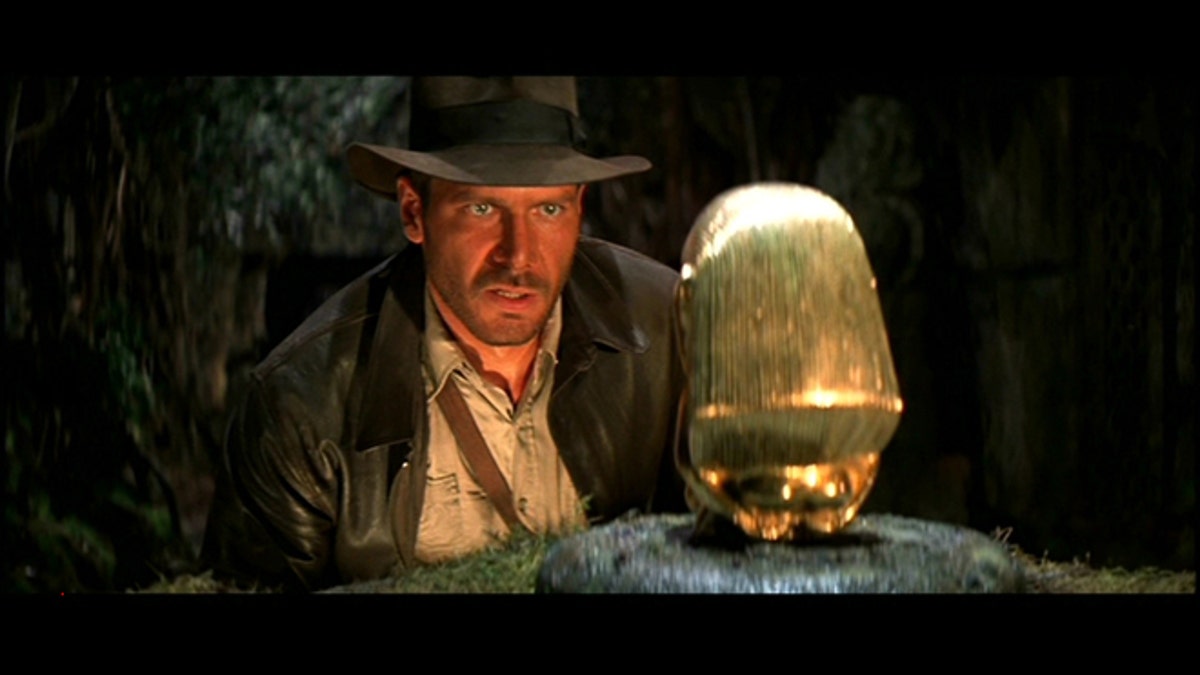
Archaeologist and explorer Harrison Ford plummed the mysteries of the past in the 1981 film, "Raiders of the Lost Ark." Many intriguing archaeology puzzles remain unsolved. (Lucasfilm Ltd.)
A new app for tablets and smartphones will soon transport you to actual dig sites and ancient civilizations around the world, from China to Egypt to Peru, without getting you down into the mud, muck and malaria that often characterizes an archeological site.
It should help keep a curious public clued in to our amazing history, said Shawn Ross, an archeologist with the University of New South Wales in Australia.
“Maybe it’s because we’ve all seen Raiders of the Lost Ark,” Ross told FoxNews.com. “Whether I’m in Sydney or Seattle or rural Bulgaria -- where my fieldwork has been for the past eight years or so -- people want to stop and talk about what you’re doing, what you’re finding, and what it all means.”
But communicating that information is little different today than it was for the whip-wielding Dr. Jones in the 40s. Most modern archaeology is a surprisingly low-tech process, he said: fieldwork recorded on paper and, sometimes, entered later into Excel spreadsheets, an Access database or perhaps some form of geolocation software.
“We’re trying to move archaeology into a paperless world, where field recording … as well as lab work with artifacts like ceramics or stone tools is conducted using mobile devices,” he said.
The still unnamed mobile platform Ross is building runs on Android, and all the software is open source. The app should be available some time next year.
“The mobile portion of our project is our single largest development initiative, but we’re also ensuring that archaeologists have tools for editing, analyzing, archiving, and sharing their data.”
A Tangible Link to the Past
The new system, built with $1 million in funding from the Australian government, will store and share information in a comprehensible format that will replace hand-written notes. Called the Federated Archaeological Information Management Systems (FAIMS), the system is leading to the creation of creating custom-built applications for smartphones and tablets.
“The project we’re working on is primarily aimed at archaeological researchers and cultural heritage management professionals. It has serious potential for public outreach – which we hope to develop in 2014,” says Ross. “Getting the public involved is definitely a potential use.”
Ross is working with researchers and cultural heritage professionals first, as he begins capturing data from the field with the app and uploading it to online repositories. Next, historians and others interested in the past will tap into the technology online and conduct their research based on the archived field work of Ross and colleagues. “We’re also working with some scientists -- geologists and biologists -- who have similar fieldwork needs,” Ross told FoxNews.com.
Then it will be your turn to see if you can sift through the sands to find an artifact that others have not identified before, and perhaps make archeological history.
Other scientists called the app and underlying infrastructure a “major step forward” for archeology.
“The software facilitates access to information which would otherwise involve a laborious process of handling hundreds or thousands of pieces of original documents, and which often requires researchers to visit the institutions where the data is housed,” Paul Langenwalter, a professor or archeology at Biola University, told FoxNews.com. “This is both labor and cost effective for the researchers and institutions involved in archaeological research.”
Archeology has a poor history of going digital, he added. Past attempts have had mixed results, sometimes ending in lost data, unwieldy cataloging systems, and unexpected expenses. Today, most researchers computerize their data into catalogues that conserve space, facilitate research and storage, and can reduce the labor of analysis to a small fraction to the time required to work by hand. “This can reduce analysis time for artifacts from a week to minutes,” Langenwalter said.
Other developments may rival Ross and his work in the coming years. Dassault Systèmes, based in France, has developed Giza 3D, for example, an interactive 3D recreation of the historic Giza Plateau in the Middle East. This resulted from a collaboration with Harvard University.
“The two organizations used more than 100 years of real archeological data unearthed at Egypt’s famous Giza Plateau to create a painstakingly and historically accurate virtual world. The experience is available online to anyone,” a spokeswoman for the project said. “Harvard’s Egyptology classes allow students to be immersed within the Giza Plateau as it existed thousands of years ago with this 3D environment. “
Another project from Dassault, Paris 3D, is a virtual 3D Paris that anyone can explore, thanks to a two-year collaboration with Paris historians. Viewers can virtually visit a 3D Paris as it stands today, and as it looked throughout time, from 52 BC to the present, including stops in the middle ages and the 1889 World’s Fair. The 3D experience will be available online to anyone and through an iPad application.
“It’s time to take archaeological records out of drawers and filing cabinets,” Ross said.
